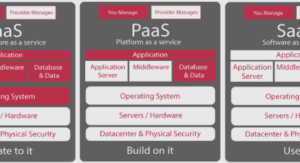Numerical Database and Flight Management System
The FMS is the key with which to responds to most of the airlines’ economic worries in terms of fuel and time costs (Creedon, 1983). In 1982, Boeing began to install FMSs on B- 757 and B-767 as standard equipment, and later Airbus installed FMSs on the A310. These FMSs became standard for most commercial airplanes: the Airbus A300-600, A320, A321, A330, A340, Boeing 737-300/400/500, B747-400, and B-777, the Fokker100, and the McDonnell Douglas MD-11 and MD-90) (Liden, 1995). The industry was not prepared for this “revolutionary advance in the management of the flight” as mentioned by Liden in his paper (Liden, 1995). Therefore, in order to meet the aircraft manufacturers’ and the airlines’ requirements, different FMS versions were designed, and during the ensuing years, new features and improvements have been added in the FMS architecture. Customers’ requirements have been met thanks to the flexibility and functionality of the FMSs’ software architecture. Due to the anticipated air traffic growth, and to the FMSs inclusion in the ATM systems, an upgrading to hardware technology should give better ratings to FMS’s market (Liden, 1995). The airlines and the airplane manufacturers have decided to use FMSs as a long-term solution for automatized flight planning, and recording flight procedures.
The computerization of the FMS has revealed remarkable advances, including pilot workload reduction, increased flight safety, the insertion of large route databases, and trajectory optimization tools (Igor and Atkins, 2001). As a very complex avionics system, an FMS has the capability to predict and optimize the flight plan based on the following parameters: weight or gross weight, aircraft type, engine and performance characteristics, winds, air temperature, etc. Other parameters include the airspeeds, Mach numbers, and altitudes needed to produce four-dimensional (4D) flight profiles (lateral and vertical), as explained by Collinson and Walter (Collinson, 2011; Walter, 2001). The FMS architecture includes functions for navigation, flight planning, trajectory prediction, performance computations, and guidance (Walter, 2001). These functions are supported by the Navigation Data Base (NDB), and the performance database (PDB) of the airplane. The NDB must be updated monthly, while the PDB should be updated whenever a change in an aircraft’s performance characteristics occurs (e.g. an engine retrofit). The PDB encloses aircraft/engine model performance data, which is composed of the drag, thrust, fuel burnt or fuel flow (depending on the flight regime), and the speed/altitude of aircraft flight envelope. The flight envelope is defined by Shin in (Shin et al., 2011) as the safe flying area of an aircraft, as described by certain variables. A vertical flight profile, calculated along a lateral path, is composed by the 3 regimes of climb, cruise and descent. Trajectory optimization problems usually have the following inputs: the center of gravity position (), the speed (), the weight () or gross weight (), the ISA (International Standard Atmosphere) temperature deviation (Δ), the altitude (ℎ). The output parameters of these problems are expressed in terms of the fuel burn (), the horizontal distance travelled () or () for the climb regime, and the fuel flow ( ) for the cruise regime.
White, gray and black models
Starting from some basic physical laws and known parameters, we can create what is known as a ”white-box” model, that is a theoretical model. Therefore, this model could be described by some sets of equations. Under other circumstances, with no prior information, the model has to be developed from the measured data, and because lacking information about the system internal structure and its internal relations, the model is known as an empirical ”opaque” (black-box) model. Our aero-propulsive model (i.e. an aircraft modeled after a DS concept) is a combination between these two models, and is known as a “grey” model or a “hybridization” of the above two models. Representative of a semi-empirical model class, the aero-propulsive model has unknown parameters which are computed from the experimental data, and they are also based on the theoretical (i.e. the numerical database) model built. Mathematical modeling by means of parameter estimation is one of the techniques needed to determine a system’ characteristics (i.e. the aircraft performance parameters determined from aerodynamics and propulsion data). Aircraft parameter estimation is the most well-known example of system identification methodology, which helps to solve the engineering inverse problem of model determination and validation through a set of observations (i.e. the flight tests data) (Hamel and Jategaonkar, 1996). Hamel et al. (Hamel and Jategaonkar, 1996) also state that the system identification methods had become the most appropriate base for model validation in research and industry, by managing aircraft design and by improving risk and cost reduction in the ideal implementation of both existing and new-generation aircrafts. Parameter estimation is a method of using observations from a dynamic system (DS) (i.e., any aircraft as a physical system) to develop a mathematical model that represents the system’ features to an acceptable degree. This is a process of determining the unknown parameters of a mathematical model based on input–output data (flight data), and can be expressed graphically, as shown in Figure 1.2.
The estimation process is the crucial step in the model’s performance, which we are seeking to improve it, and which depends on the accuracy of its parameter estimates. The created model is described by a finite set of parameters, whose values are calculated by applying the estimation techniques. The problem of parameter estimation is based on an optimization of the error function that generates a set of equations that will estimate the dynamic system (DS) parameters. The objective is to obtain optimal estimates of the unknown parameters that best describe the behaviour of the DS. Basically, the path is found based on a least square error minimization between the model response () and the actual system’ response (). With the arrival of the high-speed computers, experienced techniques like the innovative methods based on artificial neural networks have found increasing applications in parameter estimation problems (Raol, Girija and Singh, 2004).
The black box model, used as a predictor, is a neural network that can approximate a function without seeing the structure of the approximated function. It is an efficient tool for computing models. System identification is simply a form of mathematical approximation of a real-life system. The idea is to derive a model of acceptable accuracy from the available flight data. This model is the best approximation of the real description of an aircraft (Ljung, 2010). In reallife, practical systems or real-life objects (i.e. aircraft) are non-linear, and therefore the approximated model should be matched to the data of the system (i.e. the flight data or any AFM data). The parameters of the matched model need to be estimated. According to Zadeh, a system identification developed from system theory and accepted by the aerospace industry says: “System identification (determination, on the basis of observation of input and output, of a system within a specified class of systems to which the system under test is equivalent; determination of the initial or terminal state of the system under test)” (Zadeh, 1962) Based on Zadeh definition, the system identification process includes a model structure definition built on mathematical equations and the estimation of parameters defining the model. Schematically, Figure 1.3 describes the system identification concept.
Prediction-Error (PE) Method
The Prediction-Error (PE) method allows the parameters estimation for the non-linear function (i.e. the model) that minimizes the sum of squared errors between the measured output and the predicted output. The choice of the optimization algorithm depends on the structure of the function . The Matlab® Optimization Toolbox™ has many algorithms available, but the Nelder-Mead (NM) algorithm was the selected in this research thesis. This NM technique is a heuristic search method proposed by John Nelder and Roger Mead in 1965 (Daamen, Buisson and Hoogendoorn, 2014). It is a gradient-free optimization method, and is used since 2004 in the car-following model calibration to develop the model parameter estimates. The NM method, as one of the most widely applied direct search method has the particularity to be used for “nonlinear unconstrained optimization“. This nonlinear unconstrained optimization algorithm the considered parameters do not have upper or lower bounds. By a nonlinear optimization we find the “optimal” model’s parameters, which give the best fit to the sample data. Known as the “downhill simplex” algorithm (Daamen, Buisson and Hoogendoorn, 2014; Lagarias et al., 1998), this iterative method is based on a minimization routine. The aim of the method is to minimize a scalar-valued nonlinear function of n real variables (parameters) starting from an initial value, without any derivative information, but utilizing only the function values. Therefore, the methodology presented in Chapter 2 describes the way to find the initial parameters’ of vector that defines the model. The algorithm is designed to converge to a local minimizer, as solution of a non-linear system of equations, and it can be applicable nearly from any crude approximations or starting points (Dennis Jr and Schnabel, 1996). To run this algorithm, we used the fminsearch routine, as a Matlab® optimization tool (MathWorks, 2013). This method has the particularity to be iterative, for this reason this initial values of the parameters are very important.
INTRODUCTION |





